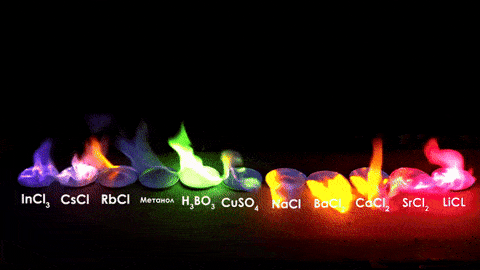Sources, Sources, and more Sources
- theconservasianist
- Jan 1, 2020
- 4 min read
Updated: Mar 18, 2020
Since the Dawn of Humankind, we have all been searching for truths in this world. "Why are we all here? What makes the water blue? Is that a woolly mammoth or my uncle?" It's practically in our nature to be curious about the world around us. The hard thing has always been trying to decipher what is actually true.
Now as we've discussed in our past two posts in the SciBlog series, we have established that science is a process (not a belief) that we can use to make sense of the universe and the scientific method is how we actually can come to our conclusions. Remember that science is credible because it is testable by using the scientific method. If we get different results every time a conclusion gets tested, then that means that either: a) people are practicing bad science, or b) the original conclusion being tested just doesn't hold up and needs to be redefined then retested.
With either reason, it is important that testing gets done to help us refine our collective knowledge.

I'd like to continue to reiterate that science is for everyone and from everyone; it's not just for a certain set of people. It is the everything we have learned and continue to learn from people all over the world. What we discover from science really illuminates a truly wondrous beauty all around us.
Now all this may seem to tie a neat little bow on the whole issue BUT we are running in to the next big problem when it comes to science...how do you know what to trust? Well, I have a two part answer for you. The first part is pretty simple and second part is a bit more complicated.
Welcome back everyone to SciBlog, let's get to learning and let's start with the first part in this answer: sources.
Primary sources.
In science specifically, primary sources are the original research being done. For example, articles published in scientific journals of new research are all considered primary sources. In science, primary sources are arguably the most important when you're trying to gather evidence. Despite their necessity, they can actually be quite hard to access. Many are hidden behind monetary costs, like having to pay from various publication entities. Luckily there is a way to bypass this. Libraries often can help you access them and you can also ask the original authors; they are usually willing to share their research.
Secondary sources
Any other work that utilizes that original research can be considered a secondary source. For example, this blog is a secondary source. The only time that would change is if I were to conduct original research and post about it here. Now I may be shooting myself in the foot a little bit here for my own credibility, but secondary sources are generally not as reliable in passing on information as primary sources are. Some things can get lost in translation so it's really important that whatever (or whoever) your secondary source is, that it's diligent in citing primary sources and conveying the information accurately. For example, if I had to choose between a 5th grader and a college student majoring in marine biology to give me a detailed report on how the tides work, it's a pretty a safe bet that the college student will be more accurate than the 5th grader. (Unless that 5th grader is seriously a genius and is amazing at googling things then I may have genuinely to reconsider my preconceptions.)
Tertiary Sources
These sources are essentially used to find other sources. Think of things like bibliographies, or encyclopedias. Now tertiary sources and secondary sources can be very similar to another. For example Wikipedia is an excellent secondary source because none of the content is being produced on there is original. Instead it serves as an online encyclopedia written by contributors. However, it is also an excellent tertiary source because it often lists references at the bottom of where people are getting their information. Now the reason your teachers say that Wikipedia isn't a good source is because it is easily editable from anyone and sometimes the references aren't necessarily trustworthy. Instead of citing primary sources, they may cite an opinion piece which has no basis in facts. Wikipedia is a great starting point for getting information but to really get to the heart of something you're definitely going to have to dive a bit deeper.
Now because I should lead by example here is my source for all this information. If you want to learn more about sources with some examples in a more literary sense please check out that link.
So, the easy answer is primary sources will be the most reliable, secondary and tertiary sources are less reliable but are great avenues to read primary sources.

For the more "complicated" answer...primary sources are still generally the most reliable BUT that doesn't mean that every primary source should immediately be accepted as fact. Although we've made it a little simpler on where to look, it's still a bit complicated on what to trust, but that will have to wait for the next one.
Up next: How to read a scientific paper and how to weed out the good science from the bad science.






Comments